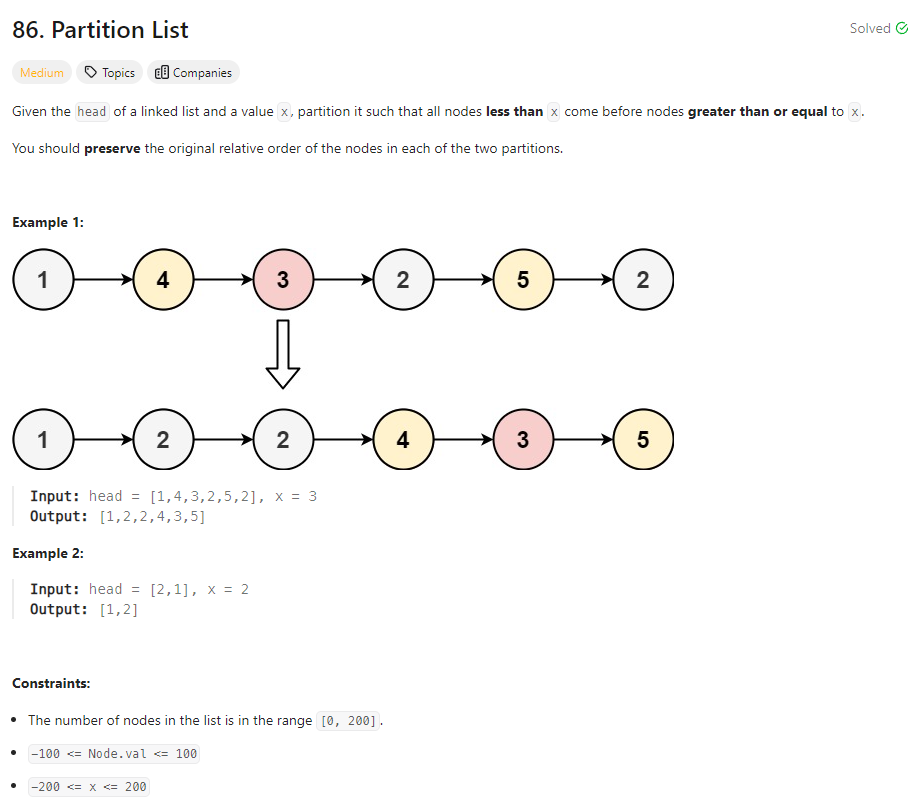Problem of The Day: Partition List
Problem Statement
Intuition
The goal is to partition a linked list into two parts: nodes with values less than x and nodes with values greater than or equal to x.
Approach
I iterate through the linked list, categorizing nodes into two groups: those with values less than x and those with values greater than or equal to x. Then, I use two deques (less and greater) to store the nodes in each group. Finally, I merge the two deques to create the partitioned linked list.
Complexity
-
Time complexity: O(n), where n is the number of nodes in the linked list. We iterate through the list once.
-
Space complexity: O(n), as we use deques to store the nodes in the two groups. The space required is proportional to the number of nodes in the linked list.
Code
# Definition for singly-linked list.
# class ListNode:
# def __init__(self, val=0, next=None):
# self.val = val
# self.next = next
class Solution:
def partition(self, head: Optional[ListNode], x: int) -> Optional[ListNode]:
dummy = ListNode(-1)
hash_map = defaultdict(list)
curr = head
while curr:
if curr.val < x:
hash_map['less'].append(curr)
else:
hash_map['greater'].append(curr)
curr = curr.next
curr = dummy
less = deque(hash_map['less'])
greater = deque(hash_map['greater'])
while less and greater:
while less and less[0].val <= greater[0].val:
smaller_node = less.popleft()
curr.next = smaller_node
curr = curr.next
curr.next = greater.popleft()
curr = curr.next
while less:
node = less.popleft()
curr.next = node
curr = curr.next
while greater:
node = greater.popleft()
curr.next = node
curr = curr.next
curr.next = None
return dummy.next
Editorial Solution
Approach 1: Two Pointer Approach
class Solution(object):
def partition(self, head, x):
"""
:type head: ListNode
:type x: int
:rtype: ListNode
"""
# before and after are the two pointers used to create two list
# before_head and after_head are used to save the heads of the two lists.
# All of these are initialized with the dummy nodes created.
before = before_head = ListNode(0)
after = after_head = ListNode(0)
while head:
# If the original list node is lesser than the given x,
# assign it to the before list.
if head.val < x:
before.next = head
before = before.next
else:
# If the original list node is greater or equal to the given x,
# assign it to the after list.
after.next = head
after = after.next
# move ahead in the original list
head = head.next
# Last node of "after" list would also be ending node of the reformed list
after.next = None
# Once all the nodes are correctly assigned to the two lists,
# combine them to form a single list which would be returned.
before.next = after_head.next
return before_head.next
- Time complexity: O(n)
- Space complexity: O(1)
